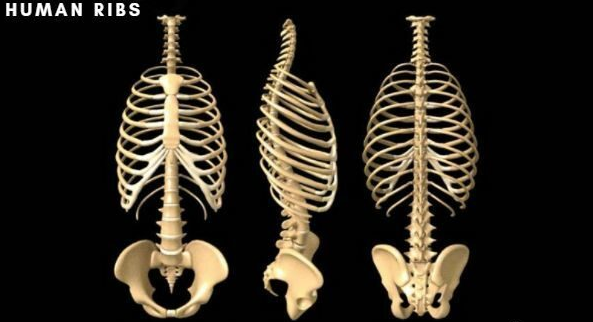How Many Ribs Do Men Have and Why?

The human body is a marvel of evolution, with each part playing a unique role in our survival and daily functioning. One such intricate structure is the ribcage. Often associated with protecting our vital organs, the ribcage also plays a role in respiration. But have you ever wondered how many ribs men have? Let’s delve deep into the anatomy of the ribcage and uncover this mystery.
Also Read:- The Impact of Gut Health on The Whole Body
The Basic Anatomy of the Ribcage
The ribcage, also known as the thoracic cage, is a bony and cartilaginous structure that surrounds the chest’s thoracic cavity. It serves as a protective shield for vital organs such as the heart and lungs. The ribcage consists of the sternum (breastbone), costal cartilages, and, of course, the ribs.
So, How Many Ribs Do Men Have?
Men, like women, have 12 pairs of ribs, making a total of 24 ribs. It’s a common misconception that men have one less rib than women, often rooted in religious or cultural beliefs. However, anatomically and biologically, both genders have the same number of ribs.
Classification of Ribs
Understanding the ribcage requires a closer look at the types of ribs:
- True Ribs (1-7): These are the first seven pairs of ribs that attach directly to the sternum through their costal cartilage. They are called “true” because of their direct attachment.
- False Ribs (8-10): These ribs do not attach directly to the sternum. Instead, their cartilage is connected to the cartilage of the rib above.
- Floating Ribs (11-12): The last two pairs of ribs are termed “floating” because they do not have any anterior attachment to the sternum. They are much shorter and provide protection to the kidneys.
Functions of the Ribcage
- Protection: The primary function of the ribcage is to protect the heart, lungs, and other vital organs from external injuries.
- Support: The ribcage provides structural support to the thorax and anchors muscles used in respiration, the upper limbs, and the muscles of the neck, back, and abdomen.
- Respiration: During breathing, the ribcage expands and contracts, aiding in lung expansion and contraction.
The Evolutionary Perspective
From an evolutionary standpoint, the ribcage has undergone changes to accommodate the needs of different species. Early vertebrates had more rib pairs, which extended along most of their back. As species evolved, especially bipedal humans, the number of ribs and their structure changed to provide better support and protection to the organs.
Common Rib-Related Conditions and Injuries
The ribcage, while sturdy, is not immune to injuries or conditions:
- Rib Fractures: Often caused by trauma, rib fractures can be painful and may take several weeks to heal.
- Costochondritis: An inflammation of the cartilage that connects a rib to the sternum, causing chest pain.
- Rib Dislocation: This occurs when a rib becomes partially or fully dislodged from its socket.
Conclusion
The ribcage, with its 24 ribs, plays a pivotal role in our anatomy, ensuring our vital organs are shielded and aiding in the essential process of respiration. While men and women share the same number of ribs, the ribcage’s significance goes beyond mere numbers. It’s a testament to nature’s design, ensuring protection, support, and functionality. So, the next time you take a deep breath or marvel at the human body’s intricacies, spare a thought for the humble ribcage and its 24 guardians.









